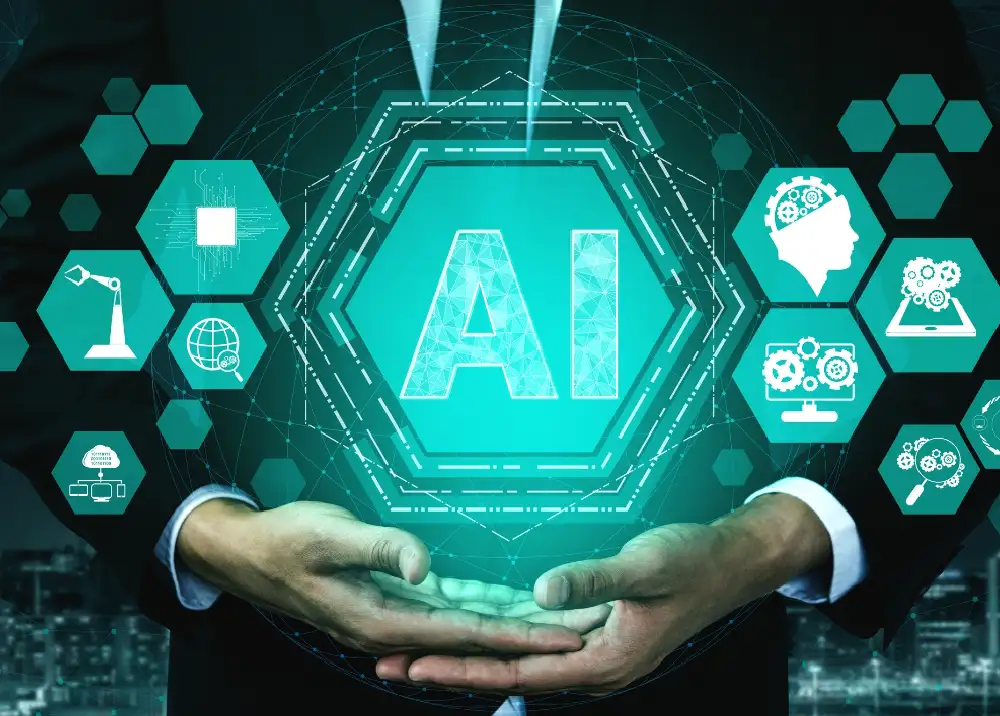Ever wondered how your favorite online stores seem to know exactly what you want? Or how voice assistants like Siri and Alexa can understand your every command? Artificial intelligence (AI) is the secret sauce behind these remarkable feats, and it’s not just for tech giants. In fact, AI is becoming an essential tool for businesses of all sizes. According to a recent survey, over 80% of small and medium-sized enterprises plan to implement AI in their operations in the next two years. So, how can AI transform your business in the digital age? Let’s find out.
The Role of AI in Business Operations
Artificial Intelligence (AI) is a broad term encompassing various technologies that enable machines to perform tasks that typically require human intelligence. These tasks include data analysis, pattern recognition, problem-solving, and decision-making. In the realm of business operations, AI has evolved to become a versatile tool with a wide range of applications. From chatbots and virtual assistants to advanced data analytics and machine learning algorithms, AI empowers businesses to automate tasks, gain valuable insights, and enhance customer experiences.
Transforming Traditional Business Operations
AI is more than just a technological tool; it’s a catalyst for redefining how businesses operate in the digital age. In the following exploration, we delve into how AI is revolutionizing traditional business processes.
Streamlining and Automating Routine Tasks
One of AI’s primary roles in business operations is streamlining and automating routine, repetitive tasks. For instance, AI-powered chatbots can handle customer inquiries and provide support 24/7, reducing the need for human intervention. In manufacturing, robots and automated systems can assemble products with precision and speed. This automation not only saves time but also reduces the likelihood of errors, leading to cost savings and increased efficiency.
Enhancing Decision-Making Processes
AI plays a pivotal role in improving decision-making processes by providing data-driven insights. Data analytics and predictive analytics models can process vast amounts of information in real-time, helping businesses make informed decisions. For example, retailers can use AI to predict customer preferences and adjust their product offerings accordingly. These predictive insights enable businesses to adapt quickly to market trends and customer demands.
Improving Customer Service and Engagement
AI-driven solutions, such as chatbots and virtual assistants, have transformed the way businesses interact with customers. These AI-powered tools can provide personalized recommendations, answer queries, and guide users through various processes. This not only enhances the customer experience but also reduces response times, leading to higher customer satisfaction and loyalty.
Challenges and Considerations
As we embrace the transformative power of AI, it’s essential to recognize the hurdles and ethical considerations that accompany its adoption. Following are some of the critical challenges businesses face when integrating AI into their operations.
Data Privacy and Security
As businesses increasingly rely on AI for data-driven decision-making and customer engagement, the issue of data privacy and security becomes critical. Companies must ensure that the data collected and processed by AI systems are protected from unauthorized access, breaches, and misuse. Complying with data protection regulations, like GDPR and CCPA, is essential to maintain customer trust and avoid legal repercussions.
Ethical Concerns and Bias in AI
AI algorithms can inadvertently perpetuate biases present in the data they’re trained on. This section addresses the ethical concerns related to AI, such as algorithmic bias, which can lead to unfair or discriminatory outcomes. Businesses must implement measures to mitigate bias in AI systems, promote transparency, and uphold ethical standards in AI development and deployment.
Workforce Adaptation and Upskilling
Integrating AI into business operations often requires a workforce with new skills. As tasks are automated, employees may need to adapt to new roles that involve supervising AI systems, interpreting their outputs, and collaborating with machines. Companies should invest in employee training and upskilling programs to ensure their workforce is prepared for the changing landscape.
Integration and Scalability Issues
AI implementation may involve integrating various systems, software, and data sources, which can be complex. Additionally, scalability can be challenging as business operations expand. Ensuring that AI solutions can grow alongside the business without compromising efficiency and performance is crucial. This section delves into the strategies and considerations for addressing these integration and scalability issues.
Future Trends in AI and Business Operations
The AI landscape is ever-evolving, and staying ahead of the curve is crucial. In the following section, we peer into the future to uncover emerging trends in AI and how they’ll impact business operations.
AI and the Internet of Things (IoT)
The Internet of Things (IoT) is the network of interconnected devices that can communicate and share data. The integration of AI with IoT allows businesses to collect, analyze, and act upon real-time data from various sensors and devices. This section will explore how this fusion of AI and IoT is reshaping business operations, from predictive maintenance in manufacturing to smart cities’ infrastructure management.
AI in Supply Chain Management
AI is revolutionizing supply chain management by optimizing logistics, predicting demand, and enhancing inventory management. This section will detail the applications of AI in supply chain operations and how it is helping businesses reduce costs, increase efficiency, and improve customer satisfaction.
AI-powered Virtual Reality and Augmented Reality
AI’s role in virtual reality (VR) and augmented reality (AR) is a burgeoning trend with implications for marketing, training, and customer experiences. This section will explain how AI is enhancing VR and AR applications, from creating hyper-realistic virtual environments to providing real-time, AI-driven guidance in augmented reality scenarios.
Preparing Your Business for the AI Revolution
AI adoption is not just about the technology; it’s a strategic transformation. Here, we outline the crucial steps businesses should take to prepare themselves for the AI revolution.
Steps to Evaluate Your AI Needs
Before diving headfirst into AI adoption, businesses should conduct a comprehensive evaluation of their AI needs. This involves assessing which areas of the organization could benefit from AI, identifying specific challenges that AI could address, and understanding the expected outcomes. It’s essential to have a clear understanding of your AI needs to ensure that the technology aligns with your business objectives.
Building an AI Strategy
Developing a well-thought-out AI strategy is a critical component of successfully integrating AI into business operations. This strategy should outline the goals and objectives of AI adoption, the technology stack required, and the timeline for implementation. It should also consider the potential impact on the workforce and customer experience. The AI strategy serves as a roadmap for how AI will be integrated into the organization, guiding decisions and actions along the way.
Investing in AI Technologies and Talent
Investing in AI technologies and talent is the practical step towards actual implementation. Businesses need to allocate resources for acquiring AI technologies, whether through building in-house solutions, partnering with AI vendors, or a combination of both. Additionally, investing in talent means recruiting or upskilling employees who can develop, maintain, and manage AI systems. Data scientists, machine learning engineers, and AI specialists play a pivotal role in executing the AI strategy.
Summing Up
AI is no longer the future—it’s the present, and businesses that harness its potential are better positioned for success in the digital age. By embracing AI, streamlining operations, addressing challenges, and preparing strategically, companies can not only thrive but also lead the way in this transformative revolution. The question is not whether to adopt AI but how to do it effectively, and that journey begins now.











